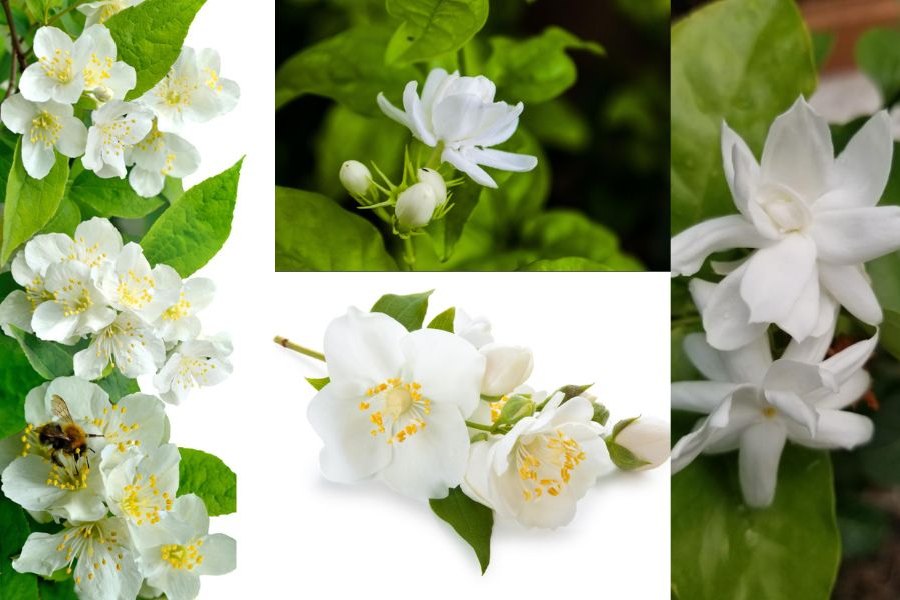There’s nothing quite as enchanting as stepping onto a lawn on a breezy, moonlit evening and being embraced by the sweet fragrance of Jasmines. This beautiful white flower thrives across the township, and with a little care, can flourish in your garden too.
The Jasmine or Bela flower is widely cultivated for its attractive and sweetly fragrant flower. It is a small shrub or vine growing up to 18 to 120 inch in height. Jasmine is a genus of about 200 species of fragrant-flowered shrubs and vines of the Olive family. The flowers are most fragrant in the evenings and morning.
The scientific name of this plant is Jasminum sambac while common names are Bela, Mogra, Arabian Jasmine, Sambac Jasmine etc. It is indigenous to tropical Asia, from the Indian subcontinent to Southeast Asia.
Their culture requires well-draining soil, regular watering, and plenty of sunlight to thrive. They are adjusted to conditions of full sun to partial shade.
Temperature and humidity – Being a tropical plant, the Jasmine requires warm temperatures to thrive. For healthy growth, a temperature of over 20 degrees centigrade is suitable. But some varieties like Winter Jasmine are more cold-tolerant.
Soil - Jasmine plants like neutral to slightly alkaline soil. Maintain pH levels between 6.5 and 7.5. Use organically rich, sandy loam soil that drains well.
Light - Jasmine plants need at least six hours of bright, direct sunlight daily. Warm blooming species do best in full sun, cold blooming varieties fare better in some shade. Jasmines grown in low light produces fewer flowers than those grown in full sun.
Water - Jasmine plants do not like soggy soil so keep the roots evenly moist. Water frequently during hot weather as needed. Water potted plants twice to thrice weekly when the top inch of soil gets dry. Reduce the frequency of watering for potted plants during the cold season.
Fertiliser - Use balance NPK fertiliser fortnightly and feed liquid fertiliser (mustard cake solution/fish emulsion etc). For vigorous Jasmine bloom, apply fertiliser with higher phosphorous (bone dust) content.
Way to bloom - Jasmines bloom profusely and reliably as long as the plants are kept warm, evenly moist, and exposed to bright sunlight with high phosphorous fertiliser.
Pests - Jasmine plants tend to attract a number of pests and may contract several fungal infections due to their highly fragrant flowers.
These plants are vulnerable to leaf-chewing caterpillars, budworms, leaf rollers, and webworms. Budworms are the larval form of a small white moth that eats flower buds. A coiled leaf indicates the presence of leaf rollers and webworms build spidery web-like nets. Apply neem oil at the first sign of pests.
Houseplants are more likely to attract sap-sucking insects including spider mites and aphids, scales, whiteflies, and thrips, though these pests can also harm outdoor plants. These are mostly tiny insects and are difficult to locate.
Wilted or spotted leaves, webbing, and yellowing are signs of pests on your plants. Try applying regular insecticide. In cases of severe invasion, a specific pesticide may be required.
Diseases- Rust diseases appear as red discolouration on all parts of the plant. Copper-based fungicides can control this type of infection.
‘Fusarium’ wilt is a soil-borne fungus that is difficult to eradicate. It usually appears during warm temperatures. Roots of affected plants turn black and surrender to rot and, in most cases, the plants must finally be destroyed.
Try routine applications of specific fungicide, or if caught early, move the plant to a new location. Remove damaged roots and treat remaining roots before replanting.
Brownish, circular spots on the leaves’ upper surfaces signify leaf blight fungus. Leaves may twist and start to dry up. Blight is most likely to occur in wet conditions. If your plant is affected by this, treat it with specific fungicide.
Arijit Poddar, a GD Block resident and secretary of th Bidhannagar Horticultural Society, shares tips on gardening











